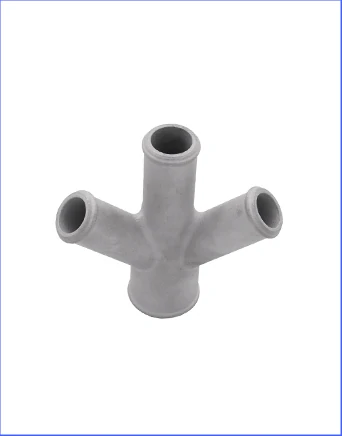Time to read: 6 min

Casting defects can significantly impact the quality and functionality of cast components. This guide offers a detailed exploration of various casting defects, their causes, and the strategies to prevent or remedy them, ensuring the delivery of high-quality castings.
Understanding Casting Defects
Casting defects are imperfections that affect the quality and can compromise the structural integrity of the final product. They can arise from material issues, heat-related issues, mold material issues, and casting shape irregularities.
Metallurgical Defects
These defects primarily stem from metal material problems, including porosity and shrinkage porosity, which can weaken the structural resistance of the component.
Porosity Defects
Porosity defects, such as gas porosity, occur when air is trapped during the casting process, leading to internal voids and compromised strength.
Causes and Remedies:
- Causes: Involved gases in metal alloy filling, released hydrogen from the molten alloy, and gases from mold release agents.
- Remedies: Use clean and dry metal alloy ingots, suitable casting parameters, control smelting temperature, and use high-quality mold release agents.
Shrinkage Porosity
Shrinkage porosity occurs as metals cool and solidify, potentially leading to uneven shrinkage and internal holes.
Causes and Remedies:
- Causes: High metal concentration in specific mold areas, low injection pressure, and uneven metal solidification.
- Remedies: Use simple casting geometries, improve runner and gating design, and increase metal injection pressure.
Defects Due to Heat
Heat-related defects like hot tears, cold shut, and thermal fatigue can occur due to improper temperature management during the casting process.
Hot Tears
Hot tears are casting abnormalities that appear as irregular patterns on the cast surface.
Causes and Remedies:
- Causes: Thermal contractions on the metal surface and inadequate metal pouring temperatures.
- Remedies: Use good fillets at junctions and place gates accurately.
Mold Material Casting Defects
Defects such as cuts and washes, fusion, runouts, swells, drops, metal penetration, and rat tails can result from unsuitable mold materials or mold design flaws.
Causes and Remedies for Mold Material Defects:
- Causes: Excess metal, low refractoriness of sand, and faulty molds.
- Remedies: Ensure proper mold design, use high-quality raw materials, and improve core and mold strength.
Casting Shape Defects
Mismatches and flash are shape-related defects that affect the aesthetics and functionality of the casting.
Mismatches and Flash
Mismatches occur due to mold misalignment, while flash appears as excess material on the parting line.
Causes and Remedies:
- Causes: Loose box pins and insufficient clamping force.
- Remedies: Ensure proper match plate pattern alignment and adjust casting parameters.
Conclusion
Mastering the art of casting involves a thorough understanding of potential defects and the proactive implementation of preventive measures. By identifying the causes and applying the appropriate remedies, manufacturers can ensure the quality and integrity of cast components.
For expert die casting services that prioritize quality and precision, consider partnering with experienced providers like Unofactory. Our commitment to strict manufacturing processes and inspections guarantees high-quality castings that meet your specifications.




